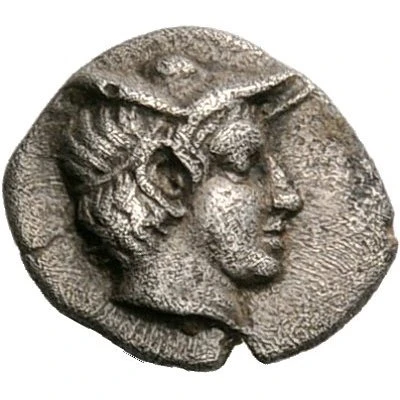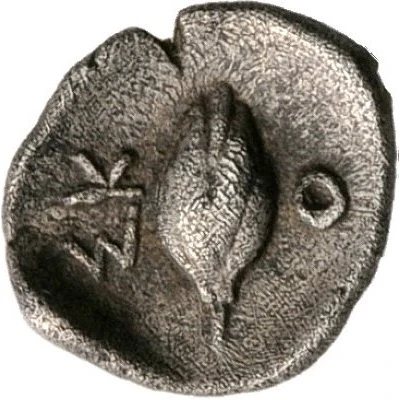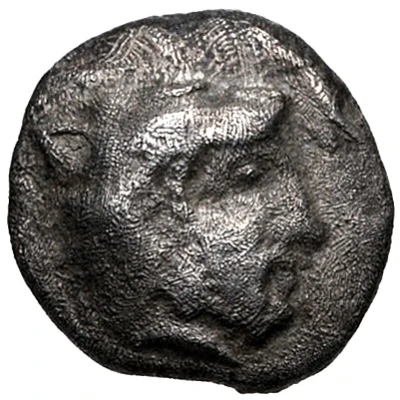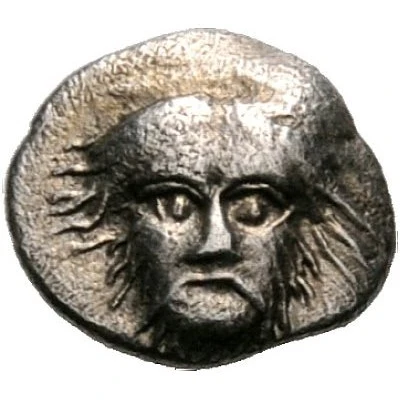
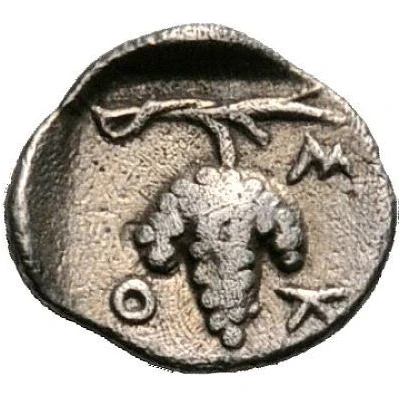

© Nomos AG
Hemiobol 425 BC - 400 BC
| Silver | 0.31 g | - |
| Issuer | Skotoussa (Thessaly) |
|---|---|
| Type | Standard circulation coin |
| Years | 425 BC - 400 BC |
| Value | Hemiobol (1⁄12) |
| Currency | Drachm |
| Composition | Silver |
| Weight | 0.31 g |
| Shape | Round (irregular) |
| Technique | Hammered, Incuse |
| Demonetized | Yes |
| Updated | 2024-10-10 |
| Numista | N#170830 |
|---|---|
| Rarity index | 100% |
Reverse
Bunch of grapes hanging from branch; all within incuse square
Script: Greek
Lettering: ΣΚ Ο
Comment
Demetriadi 2000, 4 and pl. 6, 4.
Unique.
Interesting fact
The Hemiobol coin from Skotoussa (Thessaly) was used as a form of currency in ancient Greece during the 5th century BC. Its name "Hemiobol" comes from the Greek words "hēmi-" meaning "half" and "bolos" meaning "throw", which refers to the coin's value being equal to half the value of a full "bolos" coin. Despite its small size and value, the Hemiobol was widely used in trade and commerce throughout the ancient Greek world.
